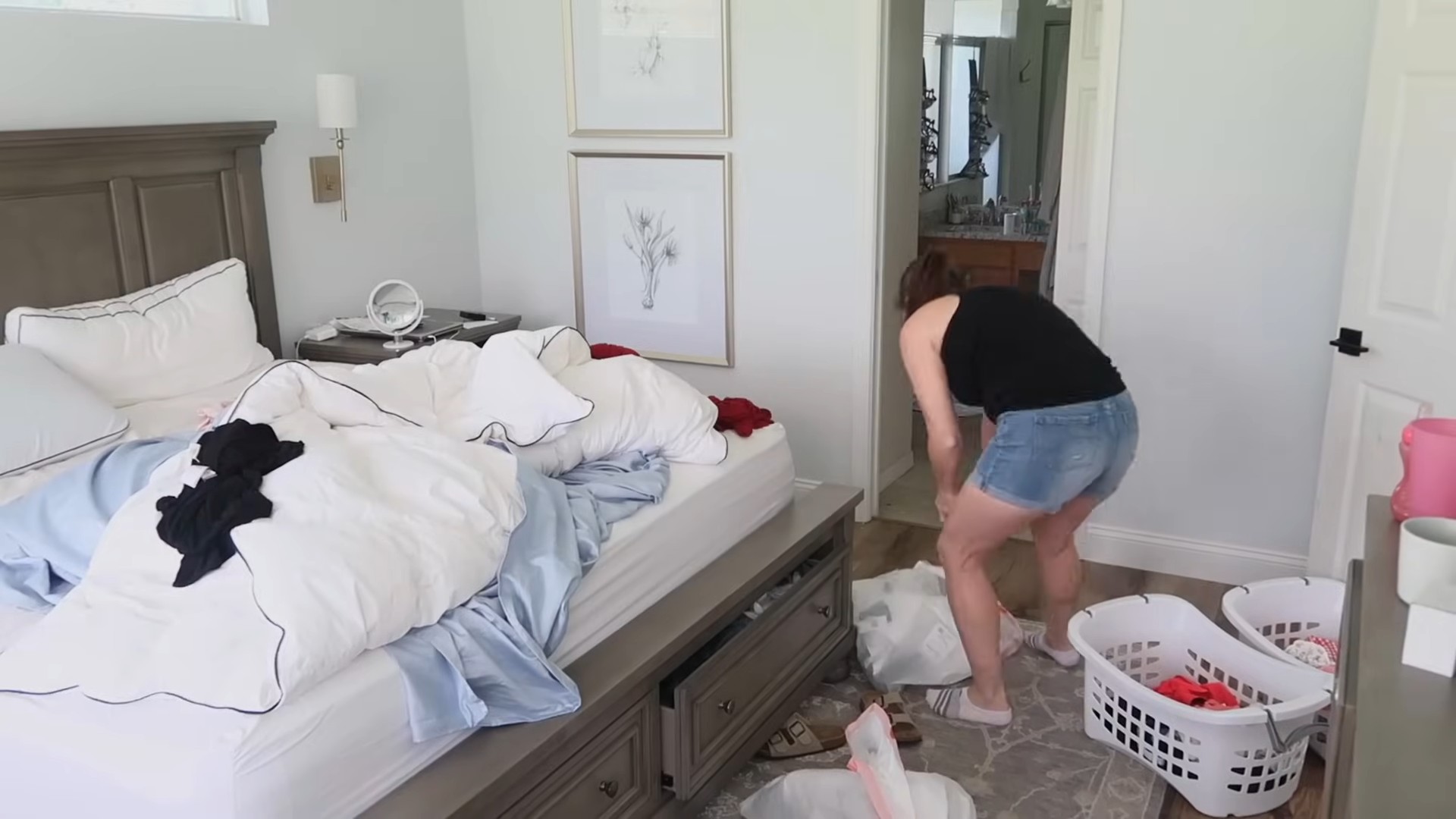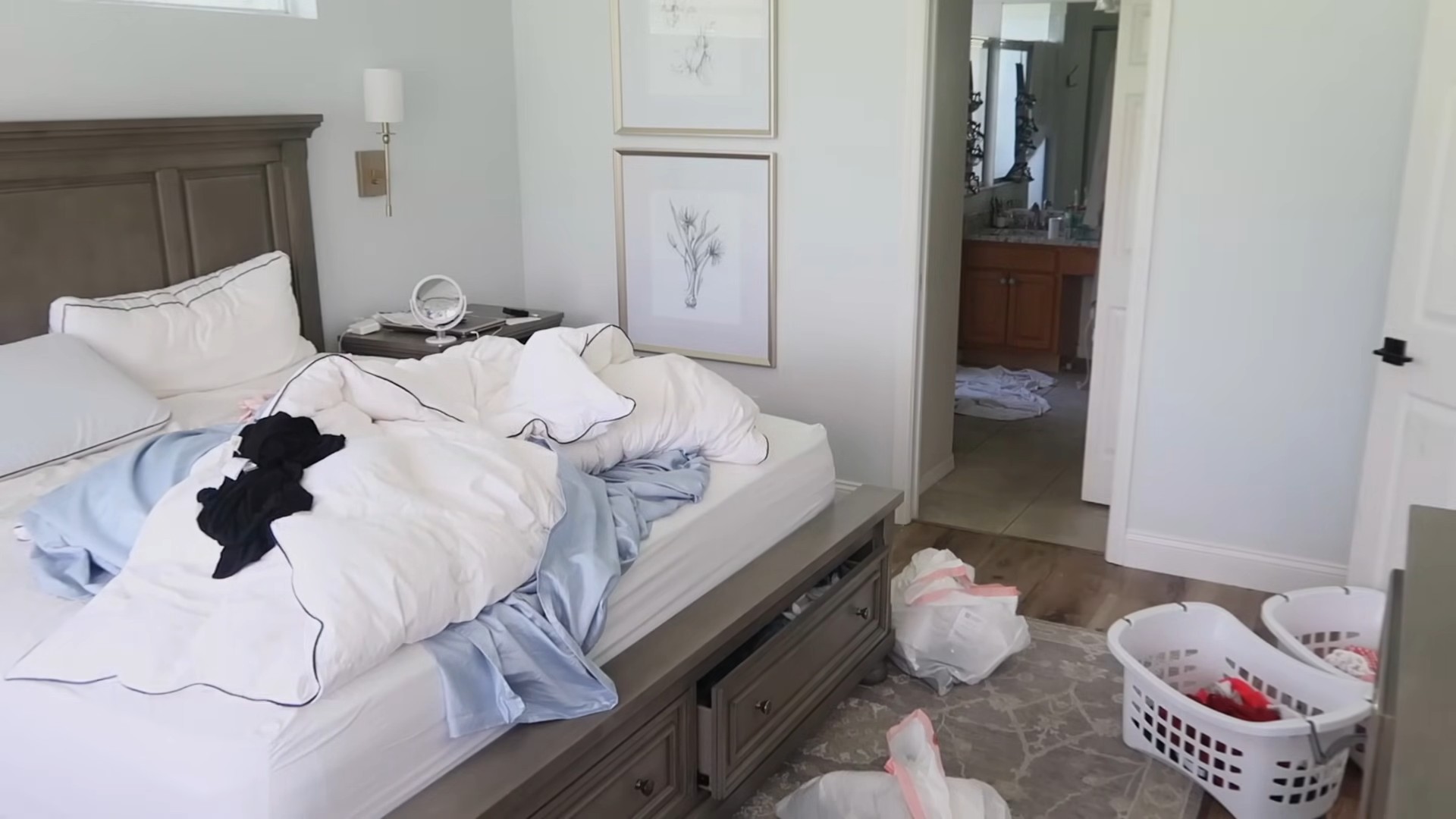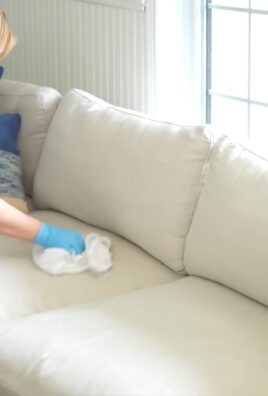House cleaning tips that work are the secret weapon every homeowner needs in their arsenal! Let’s face it, nobody *loves* cleaning, but a sparkling clean home? That’s something we can all get behind. I’m here to share some of my favorite DIY tricks and hacks that will transform your cleaning routine from a dreaded chore into a manageable, even (dare I say?) enjoyable experience.
For centuries, cultures around the globe have developed unique and ingenious methods for keeping their homes clean and tidy. From ancient Roman bathhouses to traditional Japanese minimalist living, the pursuit of cleanliness has always been a sign of respect for oneself and one’s surroundings. These time-tested practices, often passed down through generations, highlight the importance of a clean and organized living space for both physical and mental well-being.
In today’s fast-paced world, finding the time and energy for thorough cleaning can feel impossible. That’s where these house cleaning tips that work come in! I’ll show you how to tackle tough stains, declutter efficiently, and create a cleaning schedule that fits your busy lifestyle. Imagine spending less time scrubbing and more time enjoying your beautifully clean home. Ready to ditch the overwhelm and embrace a cleaner, happier you? Let’s get started!

DIY House Cleaning Hacks That Actually Work!
Okay, let’s be honest, nobody *loves* cleaning. But a clean house? That’s a different story! It’s calming, it’s inviting, and it’s just plain good for your mental health. So, I’m going to share some of my favorite DIY house cleaning hacks that are easy, affordable, and actually get the job done. Forget spending a fortune on fancy cleaners – we’re going back to basics with ingredients you probably already have in your pantry!
Cleaning with Vinegar: Your All-Purpose Powerhouse
Vinegar is my go-to for so many cleaning tasks. It’s a natural disinfectant, deodorizer, and degreaser. Plus, it’s super cheap!
Cleaning Windows and Mirrors
Streaky windows and mirrors drive me crazy! Here’s how I get them sparkling clean:
1. Gather your supplies: You’ll need white vinegar, water, a spray bottle, and two microfiber cloths.
2. Mix your solution: In the spray bottle, combine equal parts white vinegar and water. I usually do about 1 cup of each.
3. Spray and wipe: Lightly spray the window or mirror with the vinegar solution. Don’t overdo it!
4. Wipe clean: Use one microfiber cloth to wipe the surface clean.
5. Buff dry: Use the second, dry microfiber cloth to buff the surface until it’s streak-free. This is the key to a perfect finish!
Cleaning Your Microwave
Microwaves can get seriously gross. This steam-cleaning method is so easy:
1. Prepare your solution: In a microwave-safe bowl, mix 1 cup of water with 2 tablespoons of white vinegar.
2. Microwave it: Place the bowl in the microwave and heat on high for 5-7 minutes, or until the water boils and the microwave is filled with steam.
3. Let it sit: Leave the microwave door closed for another 2-3 minutes to allow the steam to loosen the grime.
4. Wipe it down: Carefully remove the bowl (it will be hot!). Then, use a damp cloth or sponge to easily wipe away the loosened food particles. You’ll be amazed at how easily everything comes off!
Deodorizing Your Dishwasher
Dishwashers can get smelly over time. Here’s a simple way to freshen them up:
1. Remove any food debris: Make sure your dishwasher is empty and free of any large food particles.
2. Place vinegar in a bowl: Pour 1 cup of white vinegar into a dishwasher-safe bowl.
3. Run a cycle: Place the bowl on the top rack of your dishwasher and run a normal cycle on high heat. The vinegar will help to break down grease and eliminate odors.
Baking Soda: The Gentle Abrasive
Baking soda is another cleaning superstar. It’s a mild abrasive, so it’s great for scrubbing without scratching.
Cleaning Your Oven
Oven cleaning is the worst, but this baking soda paste makes it much easier:
1. Prepare your paste: Mix 1/2 cup of baking soda with a few tablespoons of water to form a thick paste.
2. Apply the paste: Spread the paste all over the inside of your oven, avoiding the heating elements.
3. Let it sit overnight: This is the key! Let the paste sit for at least 12 hours, or overnight.
4. Scrub and wipe: The next day, use a damp sponge or cloth to scrub away the baking soda paste. You may need to use a little elbow grease for stubborn spots.
5. Rinse thoroughly: Rinse the oven with clean water to remove any remaining baking soda residue.
Cleaning Your Sink
Baking soda is perfect for cleaning and deodorizing your sink:
1. Sprinkle baking soda: Sprinkle a generous amount of baking soda all over the bottom of your sink.
2. Scrub with a damp sponge: Use a damp sponge to scrub the sink, paying attention to any stains or grime.
3. Rinse thoroughly: Rinse the sink with clean water.
4. For extra shine: You can also add a few drops of dish soap to the baking soda for extra cleaning power.
Unclogging Drains
A clogged drain is a major inconvenience. Here’s a natural way to unclog it:
1. Pour in baking soda: Pour 1/2 cup of baking soda down the drain.
2. Follow with vinegar: Pour 1 cup of white vinegar down the drain.
3. Let it fizz: Let the mixture fizz for 30 minutes.
4. Flush with hot water: After 30 minutes, flush the drain with a pot of boiling water. This should help to dissolve any clogs.
5. Repeat if necessary: If the drain is still clogged, repeat the process.
Lemon Juice: The Natural Brightener
Lemon juice is a natural disinfectant and brightener. It’s also great for removing stains and odors.
Cleaning Your Cutting Board
Cutting boards can harbor bacteria. Lemon juice is a great way to disinfect them:
1. Cut a lemon in half: Cut a lemon in half.
2. Rub the lemon on the board: Rub the cut side of the lemon all over the surface of the cutting board.
3. Let it sit: Let the lemon juice sit on the board for 10-15 minutes.
4. Rinse thoroughly: Rinse the cutting board with clean water.
Polishing Furniture
Lemon juice can also be used to polish furniture.
1. Mix your solution: Mix equal parts lemon juice and olive oil in a bowl.
2. Apply the solution: Dip a soft cloth into the solution and apply it to your furniture in a circular motion.
3. Buff dry: Use a clean, dry cloth to buff the furniture until it shines.
Removing Hard Water Stains
Hard water stains can be tough to remove. Lemon juice can help:
1. Apply lemon juice: Apply lemon juice directly to the hard water stains.
2. Let it sit: Let the lemon juice sit for 10-15 minutes.
3. Scrub and rinse: Scrub the stains with a sponge or cloth and then rinse thoroughly with clean water.
Hydrogen Peroxide: The Stain Remover
Hydrogen peroxide is a mild bleach that can be used to remove stains and disinfect surfaces.
Cleaning Grout
Grout can get stained and dirty over time. Hydrogen peroxide can help to brighten it:
1. Apply hydrogen peroxide: Pour hydrogen peroxide directly onto the grout.
2. Let it sit: Let the hydrogen peroxide sit for 10-15 minutes.
3. Scrub and rinse: Scrub the grout with a brush and then rinse thoroughly with clean water.
Removing Blood Stains
Blood stains can be difficult to remove, but hydrogen peroxide can help:
1. Apply hydrogen peroxide: Pour hydrogen peroxide directly onto the blood stain.
2. Let it sit: Let the hydrogen peroxide sit for a few minutes.
3. Blot with a clean cloth: Blot the stain with a clean cloth. Repeat until the stain is gone.
4. Rinse with cold water: Rinse the area with cold water.
Disinfecting Sponges
Sponges can harbor bacteria. Hydrogen peroxide can help to disinfect them:
1. Soak the sponge: Soak the sponge in hydrogen peroxide for 5-10 minutes.
2. Rinse thoroughly: Rinse the sponge thoroughly with clean water.
Essential Oils: Adding a Fresh Scent
While not strictly cleaners, essential oils can add a lovely scent to your cleaning routine and some even have antibacterial properties!
DIY Cleaning Spray
Create your own all-purpose cleaning spray with essential oils:
1. Combine ingredients: In a spray bottle, combine 1 cup of water, 1/4 cup of white vinegar, and 10-15 drops of your favorite essential oil (lemon, lavender, and tea tree are good choices).
2. Shake well: Shake the bottle well to combine the ingredients.
3. Spray and wipe: Spray the surface you want to clean and wipe with a clean cloth.
Freshening Your Laundry
Add a few drops of essential oil to your laundry to freshen it up:
1. Add to the washing machine: Add 5-10 drops of your favorite essential oil to the washing machine during the rinse cycle.
2. Add to dryer balls: Add a few drops of essential oil to your dryer balls before putting them in the dryer.
Bonus Tip: Preventative Cleaning

Conclusion
So, there you have it! These house cleaning tips that work are more than just a collection of chores; they’re a pathway to a cleaner, healthier, and more enjoyable living space. We’ve explored simple yet effective strategies, from decluttering hacks to natural cleaning solutions, all designed to make your cleaning routine less of a burden and more of a manageable, even rewarding, experience.
The beauty of these tips lies in their adaptability. Feel free to experiment with different essential oil combinations in your all-purpose cleaner to find a scent that truly invigorates you. If you’re not a fan of vinegar, lemon juice can be a great alternative for tackling hard water stains. The key is to find what works best for you and your home.
Don’t underestimate the power of consistency. Even dedicating just 15-20 minutes each day to a quick cleaning task can make a significant difference in the overall cleanliness of your home. Think of it as a daily reset, a small investment in your well-being and peace of mind.
But perhaps the most compelling reason to embrace these house cleaning tips that work is the sense of accomplishment and satisfaction that comes with a clean and organized home. It’s a feeling of control, of creating a space that nurtures and supports you. A clean home is a happy home, and a happy home contributes to a happier you.
We encourage you to try these tips and see for yourself the positive impact they can have on your life. Start small, be patient with yourself, and don’t be afraid to adjust the methods to suit your preferences. Remember, cleaning doesn’t have to be a dreaded chore; it can be an opportunity to create a more comfortable and inviting space for yourself and your loved ones.
And most importantly, we want to hear from you! Share your experiences, your successes, and even your challenges in the comments below. What are your favorite cleaning hacks? What tips have worked best for you? Your insights can help others on their journey to a cleaner and more organized home. Let’s create a community of cleaning enthusiasts, sharing our knowledge and supporting each other along the way. So go ahead, give these tips a try, and let us know what you think!
Frequently Asked Questions (FAQs)
What if I don’t have all the ingredients for the DIY cleaners?
That’s perfectly fine! The beauty of DIY cleaning is its flexibility. Many of the ingredients can be substituted based on what you have on hand. For example, if you don’t have white vinegar, you can often use lemon juice as a substitute, especially for tackling hard water stains or disinfecting surfaces. Baking soda is another versatile ingredient that can be used in various cleaning applications. If you’re missing a specific essential oil, you can either omit it or substitute it with another oil that has similar properties. For instance, tea tree oil can be a good substitute for lavender oil due to its antibacterial properties. The key is to understand the purpose of each ingredient and find a suitable alternative if needed. Always research the properties of any substitute you plan to use to ensure it’s safe for the intended surface and purpose.
How often should I be cleaning my house?
The frequency of cleaning depends on your lifestyle, the size of your home, and your personal preferences. However, a general guideline is to perform basic cleaning tasks, such as wiping down surfaces and sweeping floors, at least once a week. Deeper cleaning tasks, such as cleaning bathrooms and kitchens thoroughly, can be done every two weeks or once a month. High-traffic areas, like entryways and living rooms, may require more frequent cleaning. Creating a cleaning schedule can help you stay organized and ensure that no area is neglected. Remember, consistency is key. Even dedicating just a few minutes each day to cleaning can make a significant difference in the overall cleanliness of your home.
Are these DIY cleaning solutions safe for all surfaces?
While most of the DIY cleaning solutions mentioned are generally safe for a variety of surfaces, it’s always a good idea to test them in an inconspicuous area first. This is especially important for delicate surfaces like wood, marble, or granite. Avoid using abrasive cleaners on these surfaces, as they can cause scratches or damage. For wood surfaces, use a gentle cleaner specifically designed for wood. For marble and granite, use a pH-neutral cleaner to prevent etching. Always read the labels of any commercial cleaning products you use and follow the manufacturer’s instructions. If you’re unsure about the safety of a particular cleaning solution, consult a professional cleaner or refer to the manufacturer’s guidelines for the surface in question.
How can I make cleaning less overwhelming?
Breaking down cleaning tasks into smaller, more manageable chunks can make the process less daunting. Instead of trying to clean your entire house in one day, dedicate specific days to specific tasks. For example, you could clean the bathrooms on Monday, the kitchen on Tuesday, and so on. Another helpful strategy is to declutter regularly. The less clutter you have, the easier it will be to clean. Set a timer for 15-20 minutes and focus on decluttering one area at a time. You can also enlist the help of family members to share the cleaning responsibilities. Make it a team effort and turn it into a fun activity. Finally, remember to reward yourself after completing a cleaning task. This will help you stay motivated and make cleaning a more positive experience.
What are some eco-friendly alternatives to commercial cleaning products?
Besides the DIY solutions mentioned in the article, there are many other eco-friendly alternatives to commercial cleaning products. Look for cleaning products that are labeled as “eco-friendly,” “biodegradable,” or “non-toxic.” These products are typically made with plant-based ingredients and are free of harsh chemicals. You can also use reusable cleaning cloths and sponges instead of disposable paper towels. Consider investing in a steam cleaner, which uses only water to clean and disinfect surfaces. Another option is to make your own cleaning products using ingredients like vinegar, baking soda, lemon juice, and essential oils. These ingredients are not only effective but also safe for the environment and your health. Remember to properly dispose of any cleaning products you use, following the manufacturer’s instructions and local regulations.
How do I get rid of stubborn stains?
Stubborn stains can be challenging to remove, but with the right approach, you can often achieve success. For grease stains, try applying baking soda or cornstarch to absorb the grease before cleaning. For coffee or tea stains, use a mixture of vinegar and water. For blood stains, use cold water and hydrogen peroxide. For mildew stains, use a bleach solution or a mixture of vinegar and baking soda. Always test the cleaning solution in an inconspicuous area first to ensure it doesn’t damage the surface. For particularly stubborn stains, you may need to repeat the cleaning process several times. If all else fails, consider consulting a professional cleaner.
What are the best house cleaning tips that work for pet owners?
Pet owners often face unique cleaning challenges, such as pet hair, odors, and accidents. To minimize pet hair, vacuum frequently, especially in areas where your pets spend most of their time. Use a lint roller or rubber glove to remove pet hair from furniture and clothing. To eliminate pet odors, use an enzymatic cleaner specifically designed for pet odors. These cleaners break down the odor-causing molecules rather than simply masking them. For pet accidents, clean them up immediately to prevent staining and odor buildup. Use a paper towel to blot up as much of the liquid as possible, then clean the area with an enzymatic cleaner. Consider investing in a good quality air purifier to help remove pet dander and odors from the air. Finally, groom your pets regularly to reduce shedding.





Leave a Comment